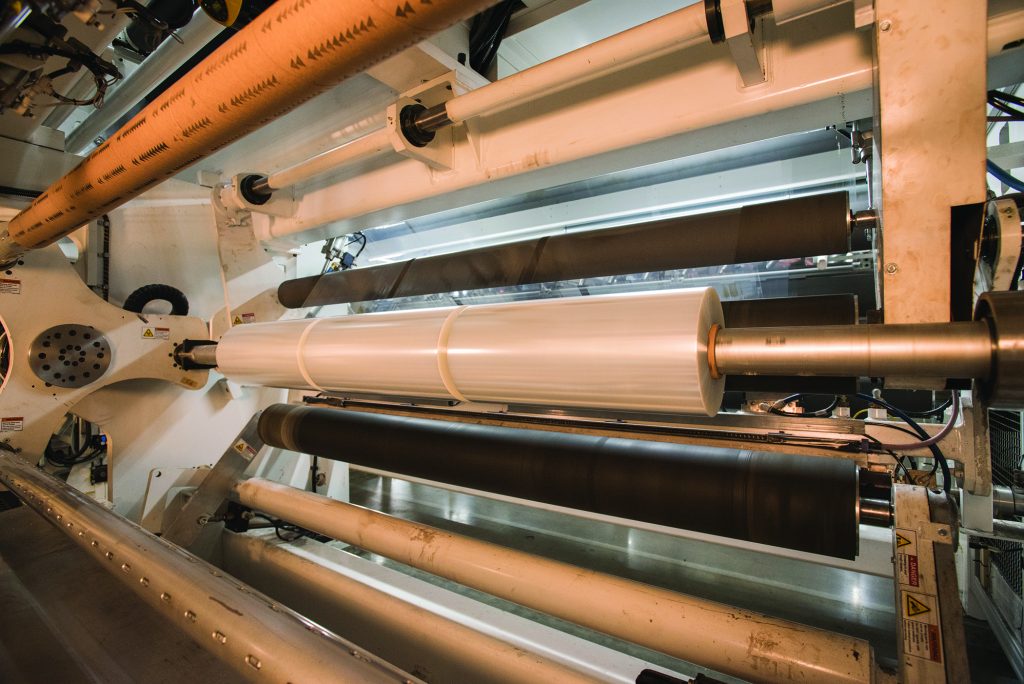 The COVID-19 pandemic has certainly put a spotlight on the importance of hygienic and protective films. These films have become essential to limiting the spread of the virus and in many cases, saving lives. The added demand requires that global processors keep their cast film operations running as efficiently as possible. Producing single and multi-layer cast film structures with excellent melt quality, high tensile strength and reliable barrier properties leave little room for error. To support product consistency, limited waste and reduced downtime, we’ve put together a list of 10 common cast film issues and how to troubleshoot them.
The COVID-19 pandemic has certainly put a spotlight on the importance of hygienic and protective films. These films have become essential to limiting the spread of the virus and in many cases, saving lives. The added demand requires that global processors keep their cast film operations running as efficiently as possible. Producing single and multi-layer cast film structures with excellent melt quality, high tensile strength and reliable barrier properties leave little room for error. To support product consistency, limited waste and reduced downtime, we’ve put together a list of 10 common cast film issues and how to troubleshoot them.
Gels, Un-melts, Charred Polymer: Overheated/degraded polymer, poor melting of polymer, foreign impurities in resin stream,
- Reduce melt temperature or if un-melts, increase extruder barrel temperatures
- Check thermocouple installation and accurate heater control
- Worn or Damaged Extruder Screw – Inspect & measure screw dimensions
- Worn or Damaged Extruder Barrel – Inspect & measure barrel ID
- Check resins and material handling for foreign contamination
Melt Fracture “Sharkskin”: Low melt temperature or die gap too narrow
- Raise melt temperature via heater setpoints
- Activate die lip heaters if equipped
- Increase die gap
Poor or Non-uniform Optical Clarity: Indicates inadequate extrudate quenching
- Extrudate melt temperature too low, raise melt temperature
- Cast roll quenching temperature too high, reduce cooling water temperature
- Needs improved film to cast roll contact, Increase vacuum box, increase air knife
- Co-extrusion interfacial instabilities – adjust layer thicknesses via extruder outputs
Voids, or Gray Streaks: Indicates potential moisture in resin stream
- Identify the cause of moisture in the material handling system
- Water condensation on extruder feed section can occur (hot, humid environment)
- Ensure raw materials are dry
Milky areas: Indicates contamination by an incompatible polymer
- Identify where the contamination is occurring and eliminate it
- Clean/purge the resin material handling system, hopper and dryer
- Purge the extruder with an un-blended neat base resin
- Disassemble and clean the extruder barrel, feedscrew and die (if needed)
Discoloration: Indicates the extrudate melt temperature is too high
- Lower the barrel temperature to recommended levels
Poor pigment dispersion: Indicates poor mixing or uneven melting
- Residence time improper for accurate mixing, Increase back pressure/residence time
- Melt temperature improper for accurate mixing, Lower temperature to increase shear
- Inspect blending dosing unit for accurate & consistent color masterbatch feeding
- Evaluate the feedscrew design; change or modify if needed
- Evaluate the resin rheology compatibility
Gauge Bands, Die Lines, Film Lines: Indicates contamination at die lips, die adjustment issues, & vacuum box adjustments
- Die lip is dirty – Clean (shim) die lips at localized lines
- Die manifold is dirty – Split, clean, and inspect die
- Die lip out of adjustment – check die gap and re-gap
- Inspect vacuum box for leaks and localized high air velocities, re-adjust
- Inspect air knife for localized high or low air velocities, clean & adjust air knife gap
Plate-out / Chill roll deposits: High entrapped air between chill roll and film, poor nip contact with plate-out roll
- Inspect plate-roll surface condition, replace if poor
- Inspect for even nip contact force across plate-out roll & cast roll
- Increase plate-out roll contact nip pressure
- Reducing plate-out -Increase vacuum, reduce melt temperature, increase cast roll temperature, reduce resin additives (slip, anti-blocking)
Film blocking: Indicates the winding tension or corona treatment level is too high
- Reduce winding tension
- Lower treatment levels
- Inadequate film cooling/quenching, reduce cooling roll temps &/or reduce line-speed
- Inadequate levels of anti-block additive, increase anti-block
Do you have questions or comments about this post? Drop a line below – we’re happy to hear from you!
If you need assistance on your cast film line, don’t hesitate to contact our service team via our website or by calling 844-MYDAVIS.
Stay safe and healthy!
Any other questions, e-mail marketing at marketing@davis-standard.com.
Cheers,
The D-S Connect Blog Team

Hi,
Thanks for the great article.
Would be possible to send me this article in WORD format so I can translate into Portuguese to send to our Cast Film DS customers in Brazil?
BY ENGENHARIA does represent Davis Standard in Brazil.
Hi Marco, of course! I will send you an email 🙂
Hi, I’m Tee from stellar films Malaysia, thanks for shared about cast film troubleshooting tips…
Hi Tee, you’re very welcome!
Dear Mrs. Denerley,
thank you for sharing these tips.
Would be great to me also to receive, if possible, this document in .pdf, for imporving my knowledge.
We are surface flame pre-treaters.
Thank you.
Best regards,
Stefano Mancinelli
Hi Stefano, thank you for reaching out. We are happy to share content that is helpful to you. Unfortunately, at this time we do not have this in PDF format. But, we may have cheat-sheets available in the future so please stay tuned 🙂
It is very useful information, do you have PDF or word format?
Good morning Chi Tong: Thank you kindly for your comment. Unfortunately, we do not offer PDF or word documents for our blog posts. We recommend bookmarking our page for reference.
Hi,
Could your provide with ETFE film casting technology? Would be glad to learn more
Best regards
Igor
Thank you kindly for your inquiry, Igor. Someone from our team will be reaching out shortly with additional information.